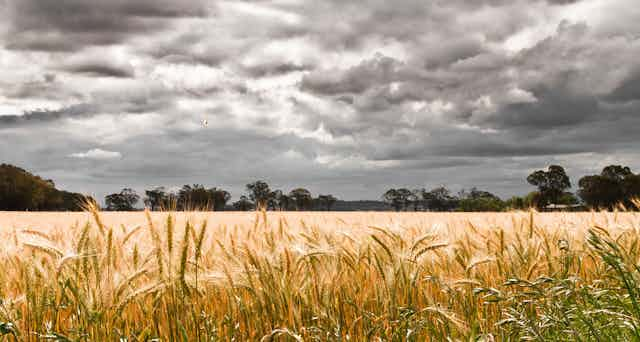Welcome to The Conversation’s series on megatrends. What are the compelling economic, social, environmental, political and technological changes Australia must grapple with over the coming decades?
In this series, Stefan Hajkowicz explores in more detail some of these issues as part of the CSIRO’s new report, Our Future World 2012.
Today, he discusses food and water security, scarcity and a growing world population.
As I write this I’m sitting in small twin engine propeller plane flying out to Longreach to give the inaugural “megatrends” presentation to local business leaders.
Just 20 minutes into our journey, the city of Brisbane is now far behind. High rise has turned into suburbia, then into rural. And then the vast outback. From this view, it’s hard to imagine resource constraints ever being a problem.
Do we really need more from less? This is the first megatrend in the CSIRO’s Futures report “Our Future World”, launched this week, with food security as one of its major themes.
Food prices today are at all time highs. Peaks in 2008 and then again in 2011 created a humanitarian crisis as hundreds of millions of poor people were thrown into hunger and malnutrition.

The world’s governments are searching for solutions and in 2011, the G20 nations agreed to implement five objectives in an action plan aiming to mitigate food price volatility.
Yet today the world has one billion hungry people. Perhaps one remedy for food high prices is high food prices. It certainly sends a powerful market signal to the agricultural sector to boost production. Supply could meet demand and thereby stabilise prices and help improve food security.
Whether by market forces or other means, the world does need to increase food production. The United Nations Food and Agriculture Organisation forecasts that the world will need to increase production 75% by the year 2050 to feed itself with population projected to increase to almost 10 billion people.
In addition, as incomes grow rates of per capita calorie consumption are rising. Rapid income growth in Asia is associated with an increased demand for high protein foods such as meat, fish, milk and eggs. The world clearly wants, and needs, much more food in coming decades.
But the supply side faces some challenges. There’s lots of land out the window but how much of it can we use to make food? Probably not much.
In 2002, in my first CSIRO research project as a post-doctoral student, we built an economic model which found that 80% of the profits of Australian agriculture are generated from just 1% of the agricultural land area.
At a global scale we lose 12 million hectares of productive agricultural land each year to factors such as desertification, land degradation and urbanisation. If this land stayed productive it could have made 20 million tonnes of grain.
It’s not just land we need to make food. We also need water. The water scarcity story might even be worse. The International Water Management Institute (IWMI) estimates that 1.6 billion people live in water-scarce river basins with inadequate financial and human capacity to develop future water resources.
Combined modelling by the International Food Policy Research Institute and IWMI explores the possibility that, under extreme scenarios, water scarcity causes crop prices to be 1.8 times greater than business-as-usual for rice, 1.7 times for potatoes, 1.6 times for soybeans and more than double for all other crops by the year 2050.
In addition to land and water, modern agriculture needs oil and energy resources. These too are under pressure. Global energy use is forecast by the International Energy Agency to rise by 40% between the years 2009 and 2035. Under this forecast oil consumption increases by 18%.
The rise in energy demand will increase the amount of biofuel production which will place yet further pressure on the scarce resources available for agriculture. Currently 1% of the world’s arable land area is devoted to biofuel production.
This is forecast to grow to between 2.5% to 3.8% by 2030.
So the data in the report provides a compelling story about more from less. Demand for food is set to grow hugely. But the supply side faces challenging constraints. Will all this vast space I can see out the window be useful in meeting the demand? Can Australia become the food bowl of Asia? Will we see a resurgence of the agricultural sector? Is it just about production or are markets, distribution systems and governance systems where the answers lie?
These and other such questions are a few that jump out of the “more from less” megatrend.
In addition to food the world faces challenges in meeting demand for mineral, energy and water resources. Many of the innovations over coming decades will find clever ways of obtaining more from less.

